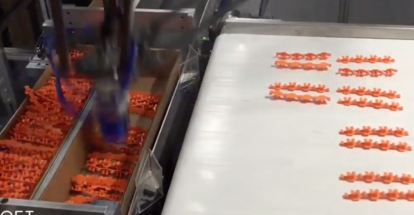
While we continue to hear concerns about robots taking jobs away from people, McKinsey Global Institute forecasts that robots can actually lead to the creation of new work for people (all while driving productivity and economic growth). So how do we know which tasks are most appropriate to automate? A great starting point is to ask yourself the following:
- Is it dangerous?
- Is it dull?
The reality is that dull and dangerous jobs can be found in nearly every sector of the industry. It’s hard to fill these jobs, harder to keep people in them, and may present liability risks based on ergonomic issues, environmental hazards, and more.
The good news is that advances in robotics and automation are changing the ways these jobs get done – eliminating the risk and giving people a chance to do work that’s more rewarding. Let’s take a look at some typical tasks that fall into the category of dull, and dangerous and how automation takes the worry out of getting the work done.
1. Dull & Dangerous Jobs: Supply Chain Solutions
We’ve all become accustomed to getting what we what overnight – and sometimes even on the same day – delivered right to our home or workplace. Ever wonder how that happens? It takes an army of workers to ensure that millions of orders are completed accurately and shipped to arrive on time, every time. More often than not, these employees face:
- Long hours
- Heavy lifting
- Stress-induced by quotas
- Harsh work environments
The tedious and stress-inducing tasks required for supply chain solutions and bin picking are better done by robots.
2. Dull Jobs: Pick and Place (Packaging)

While some upstream manufacturing is automated, the pick-and-place process is often not. Products, such as delicate injection-molded plastic clips have previously required a human hand to finish the end-of-line process of picking and placing. This work is extremely tedious and repetitive – making it a cause for both ergonomic injury and errors that may reduce productivity and quality. However, advances in end-of-arm tooling have enabled these processes to be automated.
Massachusetts-based Micron Products, a contract manufacturer specializing in precision machining, thermoplastic injection molding, mold making, and more, has automated this stage. Since installing an ABB robot coupled with a Soft Robotics EOAT system to handle the pick-and-place process of injection-molded plastic clips, the company has moved from three shifts of two operators to three shifts of one operator. While some Micron employees were initially scared about robots replacing them altogether, they “definitely like the robot now because it…makes their job easier,” says Taylor Breau, Manufacturing Engineer of Micron Products. Learn more about the ROI that Micron Products has found with the shift to automation here.
3. Dangerous Jobs: Meal-Kit Delivery Services
 The meal-kit delivery industry came onto the food-sourcing scene to rave reviews. In 2015, sales of ready-to-cook meals delivered to consumers’ doorsteps topped $1 billion and were estimated to grow by a factor of 10 over the next five years in the U.S.
The meal-kit delivery industry came onto the food-sourcing scene to rave reviews. In 2015, sales of ready-to-cook meals delivered to consumers’ doorsteps topped $1 billion and were estimated to grow by a factor of 10 over the next five years in the U.S.
While these DIY meals are welcome to those who value home-cooked meals, found that, for those who package the ingredients and instructions the working conditions are less than ideal and may, in fact, be dangerous. Workers in a California-based fulfillment center reported:
- Time allowed for breaks varied by supervisor
- Illness and injury due to the physical nature of the work, environmental hazards such as ammonia leaks and cold temperatures
- Citations from public health agencies for failure to implement comprehensive food handling safety policies
Advances in end-of-arm tools that are both safe for food handling and adaptable enough to handle the variability in shapes, sizes, and weights make it possible for robots to eliminate the danger for employees, increasing productivity and giving customers the peace of mind that will keep them coming back for more.
An Improved Workforce: Safer for People and Better for the Bottom Line
These examples illustrate just a few of the ways in which automation and robotics can tackle the dull and dangerous work that should no longer be done by people. If your supply chain is looking for ways to reduce the risk of injury to your employees, lower your employee turnover rates, and improve productivity and quality, contact us. We can show you how to build a more efficient and safer workforce.